Nigel Stanford makes sound visible for Cymatics music video
Music: this video by New Zealand musician Nigel Stanford shows a series of experiments that demonstrate how sound waves affect different types of matter.
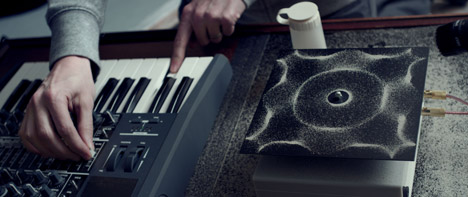
For his latest music video, Nigel Stanford uses various examples of cymatics – the science of visualising audio frequencies, which is also the title of the track.

Directed by Shahir Daud, the video shows Stanford undertaking several experiments that represent each sound in the track with a different visualisation.
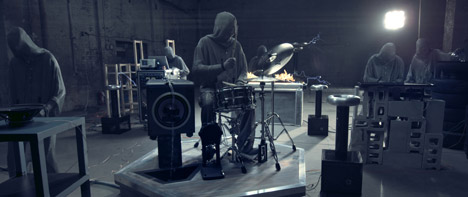
"The main idea was to create a video where every sound had a corresponding visual element," Stanford told Dezeen. "It was an unusual project because it was created backwards – the music was written last."
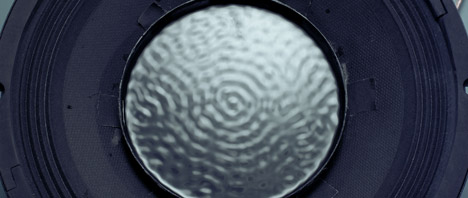
"I looked for interesting science experiments that showed how sound waves affect things, figured out what looked good, and then wrote the musical parts for each experiment," Stanford said.
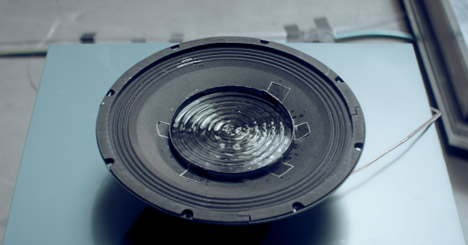
The first is the Chladni Plate, a thin metal surface that is covered with sand and attached to the top of a speaker. As different audio frequencies played on a keyboard resonate through the plate, the sand moves into patterns.

After many tests with the plate shapes, amounts of sand and different sounds – resulting in a few blown speakers – a square plate and four frequencies (657Hz, 1565Hz, 932Hz, 3592Hz) were chosen for the best-defined shapes.

A petri dish filled with vodka is taped to a speaker that plays audio frequencies of 50Hz and 100Hz to form standing waves in the liquid.

Hooked up to a drum kit, a speaker has a hose pipe taped to the front. Water flowing from the pipe appears to momentarily freeze in a spiral when an audio frequency that matches the camera frame rate of 25hz passes through it.

Magnetic ferro fluid poured into a tray ripples and forms spikes when three electromagnets underneath are switched on.

Hitting different notes on a keyboard turns on one, two or all of the magnets on in time with the music.
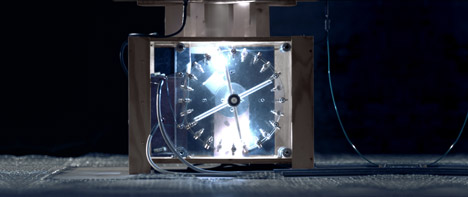
Patterns of flames are created from a metal tube filled with flammable gas, again attached to a speaker. Different audio frequencies – 409Hz, 490Hz and 564Hz – form pressure waves in the gas, creating high and low flame shapes that burst from holes along the top of the tube.

Towards the end of the video, Stanford dons a chain mail Faraday suit and continues to conduct the experiments while a high-voltage Tesla Coil generator shoots bolts of electricity at him.

By completely surrounding the wearer, the metal suit creates a path to the ground so conducts the electricity around the body without causing harm.

"Post production, we spent a lot of time in after effects cleaning things up," said Stanford. "For instance, we only had one Faraday suit and so had to film me several times and composite them together."

Cymatics is the first single taken from Stanford's new album Solar Echoes.